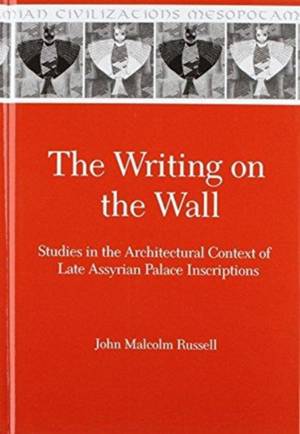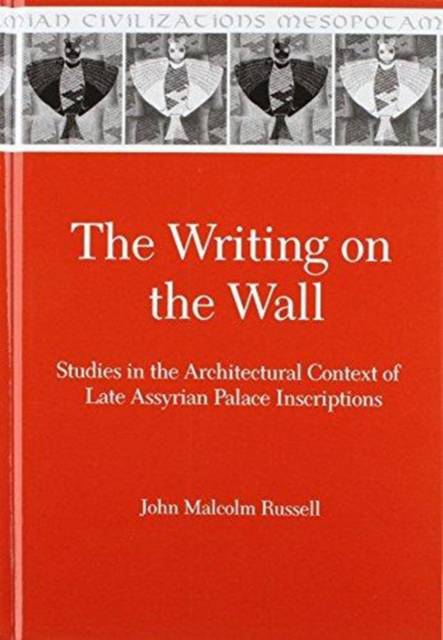
- Afhalen na 1 uur in een winkel met voorraad
- Gratis thuislevering in België vanaf € 30
- Ruim aanbod met 7 miljoen producten
- Afhalen na 1 uur in een winkel met voorraad
- Gratis thuislevering in België vanaf € 30
- Ruim aanbod met 7 miljoen producten
The Writing on the Wall
Studies in the Architectural Context of Late Assyrian Palace Inscriptions
John Malcolm RussellOmschrijving
It is too often forgotten that every Assyrian "historical" inscription functioned in a very specific context. This context influenced its content and the way in which it was perceived by ancient viewers and readers. Russell's goal is to address the reconstruction of the context of these inscriptions in order to elucidate their original impact.
In the past, the palace inscriptions, including Assyrian palace inscriptions, have been published in composite editions with little or no reference to the provenience of the individual exemplars; in addition, the original excavation reports often were more interested in the content of the inscriptions than in their locations. To achieve the objective of placing these inscriptions in their original contexts and thereby provide a base for further study of them, and stimulated by two seasons of renewed excavations at Nineveh during which he studied many inscriptions in situ, Russell returned to the British Museum and Layard's original, handwritten notes from the 19th century excavations at Nineveh--the goal being to catalogue fully and as completely as possible the individual inscriptions and their locations.
The results of Russell's labors are here published, including the first publication of several shorter inscriptions. The book is lavishly illustrated, both with museum photos and with photos by the author of many of the inscriptions in situ. The book will no doubt be the basis of all further study of the relationship between inscription and context in the palaces of the Assyrian kings.
Specificaties
Betrokkenen
- Auteur(s):
- Uitgeverij:
Inhoud
- Aantal bladzijden:
- 352
- Taal:
- Engels
- Reeks:
- Reeksnummer:
- nr. 9
Eigenschappen
- Productcode (EAN):
- 9780931464959
- Verschijningsdatum:
- 30/06/1999
- Uitvoering:
- Hardcover
- Formaat:
- Genaaid
- Afmetingen:
- 178 mm x 254 mm
- Gewicht:
- 1133 g

Alleen bij Standaard Boekhandel
Beoordelingen
We publiceren alleen reviews die voldoen aan de voorwaarden voor reviews. Bekijk onze voorwaarden voor reviews.











